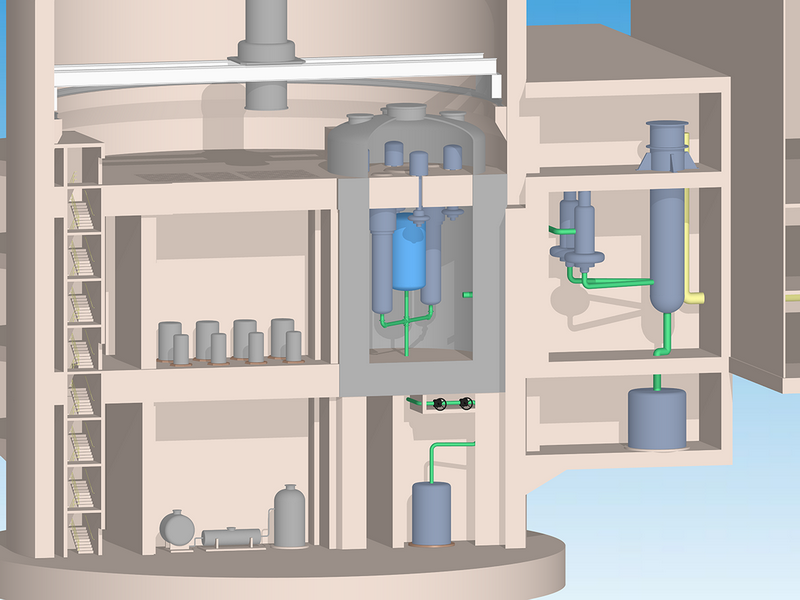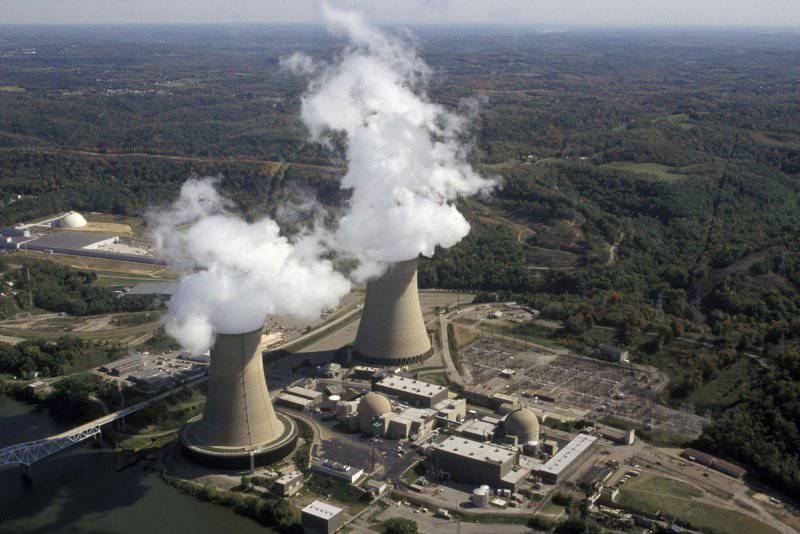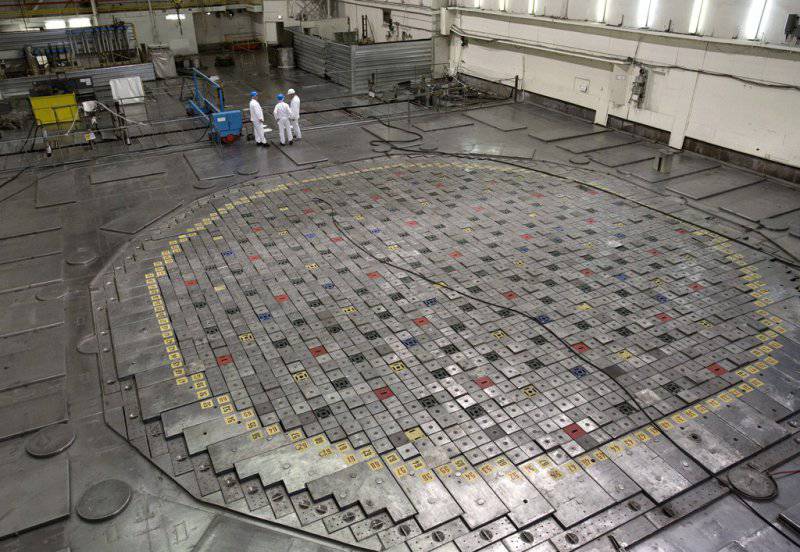In the United States are developing a reactor operating on nuclear waste
Transatomic Power has close ties with the Massachusetts Institute of Technology (MIT). Currently, the company has focused its efforts on making nuclear power more efficient, it focuses on smaller, but highly efficient installations that can be manufactured in a factory and then delivered to the assembly site. The company's specialists have already managed to create a system that is able to use various types of fuels, including materials, which in traditional nuclear energy are recognized as production wastes.
We are talking about salt decomposition reactors, which are attractive because they practically have immunity to core melts, like the one that occurred at the Japanese nuclear power plant in Fukushima. In such reactors, a mixture of salts with nuclear fuel is used, which makes it possible to significantly slow down the process of the chain reaction occurring in the reactor. At that moment, when the temperature in the core rises, the salt expands and leads to a decrease in the splitting rate. Since the melting point of salt is higher than the core temperature, even in the event of a state of emergency, at which no one can take any urgent measures, the reaction will gradually fade out by itself. This technology has been proposed before, but Transatomic Power says they were able to improve it by improving the internal geometry of the nuclear reactor. These changes made it possible to use nuclear waste or uranium with an enrichment level of just 1,8% as fuel.
New developments of the Transatomic Power company are interesting first of all because they cannot be used to create armory radioactive materials. Currently, the company's reactors are able to produce 500 MW of energy - this is only a small part of the capacity generated by standard nuclear power plants, but they are significantly smaller and produce only a small part of waste compared to large plants. The company's receipt of two million dollars for development will allow it to verify the reactor it has built. The next step will be the direct construction of the finished version of the nuclear power plant. The first prototype of such a station is expected to cost $ 1,7 billion. At the same time, the commercial production of such reactors can be launched as early as 2020. The launch of these reactors would be a major step forward for the entire nuclear industry.

Reactors on molten salts
Reactors operating on molten salt (molten salt reactors - GSR or MSR, Molten Salt Reactor) belong to one of the types of nuclear fission reactors, in which the role of the main coolant is performed by a special mixture of molten salts, which is able to operate at very high temperatures, while maintaining This low pressure. This allows to reduce the mechanical stress inside the reactor and increase its safety level. Liquid nuclear fuel is also a coolant at the same time, which allows to simplify the design of the reactor, equalizes the burnout of fuel and allows the replacement of fuel without drowning out the reactor.
MSR reactors operate at a sufficiently high temperature: 600 — 700 ° C, which still does not exceed the boiling point of the molten salt. For this reason, the pressure in the nuclear reactor is maintained slightly higher - 1 kg / cm2, which allows the reactor to do without expensive and heavy body. Another important advantage is the small reactor core, which in turn means the use of a smaller amount of protective materials. One of the types used in these fluids are fluids based on thorium fluoride-232 and uranium-233. Rectors based on the thorium or uranium cycle.
At the same time, in many reactor designs, nuclear fuel is dissolved in molten fluoride coolant - in the salt of tetrafluoride. Beryllium and lithium are also added to the melt. Nuclear fuel consumption is estimated at approximately 1 tonnes of thorium per 1000 MW of energy produced. In this case, the high-level radioactive waste for the year, the rector produces only about a ton. Of this ton, 83% will stabilize after 10 years, and the remaining 17% will need to be buried for a long time (300-500 years). At the same time, the reactor produces only 30 grams of plutonium, which is why the salt melt reactors cannot be used to release weapons-grade plutonium. Currently, proven world reserves of thorium are 2,23 million tons, and the estimated amount of unexplored reserves is estimated at 2,13 million tons.
It should be noted that today the MSR technology is still not so well studied even among nuclear engineers. Wherein story Such reactors originated in the late 40-ies of the last century. Until the end of 1960's, attempts to adapt these reactors did not cease, taking into account their compact dimensions, as sources of energy for aircraft. The first operating reactor was ready in 1954, while even having equipped a B-36 bomber with such a reactor. However, intercontinental ballistic missiles and the development of missile technology in general put an end to aircraft that could be in the air for weeks without refueling.
The main reason that MSR reactors have not received mass distribution (despite the huge reserves of raw materials and a small amount of waste) is the fact that thorium was not a raw material for the production of nuclear weapons. Already in the 1950-60 years, interest in the development of nuclear power plants that would use thorium began to cool. The blame for everything was a flaming cold war. At that time, megatons were far more important than megawatts. Now the opposite is true: megawatts are obtained from megatons. About a third of the nuclear fuel comes from reduced and outdated nuclear weapons - weapons-grade uranium and plutonium.
Information sources:
http://gearmix.ru/archives/14092
http://www.atomic-energy.ru/video/28796
https://ru.wikipedia.org


Information